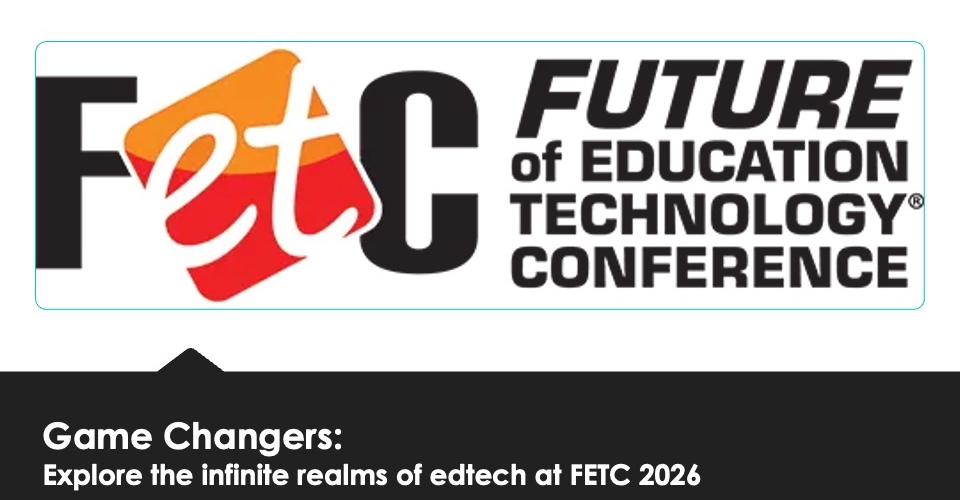District technology departments are vital in ensuring special education students have the tools and infrastructure to succeed. In today’s digital age, the right technological support can transform the learning experience for students in special education, helping them overcome barriers and fully engage with the curriculum.
By leveraging adaptive technologies, fostering collaboration between technology and special education teams, and providing ongoing professional development, districts can create an inclusive environment where all students thrive.
As an assistant superintendent of technology and learning, I partnered with Stefanie Savo, special education director of the Ansonia School District in Connecticut, to collaborate and support the district’s special education and technology leaders.
Role of technology in special education
Technology has become an essential element in supporting students with disabilities by providing individualized learning tools that cater to diverse needs. From assistive devices to adaptive software, technology offers new opportunities for students to engage with learning in previously unimaginable ways. These tools are not one-size-fits-all but are designed to meet specific educational challenges that students face daily. A few key examples include:
- Assistive Communication Devices: These tools enable non-verbal students or those with speech impairments to communicate more effectively. Devices like Proloquo2Go, an iPad app with a symbol-based communication system, give students a voice and allow them to express themselves in ways that align with their needs.
- Text-to-Speech (TTS) and Speech-to-Text (STT) Tools: Text-to-speech tools such as Kurzweil 3000 assist students with reading difficulties, dyslexia, or visual impairments by reading digital text aloud, enhancing comprehension. Speech-to-text programs like Dragon Naturally Speaking allow students with motor impairments or writing challenges to dictate their work, enabling them to complete tasks more efficiently.
- Ergonomic Keyboards and Mice: These input devices are designed for students with fine motor skill difficulties. Devices like large-key keyboards, one-handed keyboards and trackballs offer customizable solutions, allowing students with physical disabilities to navigate technology with greater ease.
- Interactive Whiteboards and Touchscreen Technology: Tools like SMART Boards and iPads provide students with cognitive and physical disabilities the ability to interact with lessons using touch or stylus-based input. These technologies promote hands-on learning and collaboration, making lessons more engaging and accessible for all students.
- FM Systems: Assistive listening devices, such as FM systems, transmit sound directly from a teacher’s microphone to a student’s hearing aid, reducing background noise and ensuring that students with hearing impairments can focus on instruction.
These technologies offer more than just access—they open doors to participation, engagement, and achievement. They allow students with disabilities to access the curriculum in ways that meet their specific needs, fostering independence and self-confidence.
Collaboration between technology and special education departments
A successful special education program requires close collaboration between district technology and special education departments. When these two teams work together, they can assess student needs, select appropriate technologies and develop implementation plans that ensure a smooth rollout of tools and systems.
Superintendents in the move: Retirements outpace new hires this week
This collaboration begins with joint strategic planning. District technology departments must work closely with special education staff to understand the unique needs of students and ensure that the infrastructure—such as devices, networks, and software—supports these needs. For instance, technologies like speech-to-text systems or learning platforms must be compatible with district networks, and sufficient bandwidth must be allocated to support virtual learning tools such as videoconferencing platforms often used in teletherapy.
Regular communication between departments ensures that problems are addressed quickly and that students continue to receive the support they need. Technology departments are responsible for maintaining the devices and platforms used by students, ensuring they remain functional and up-to-date.
Training and professional development
For technology to be effective in the classroom, educators need ongoing training. District tech departments should offer practical, hands-on sessions on assistive devices, learning management systems and other tools. Special education, general education teachers and paraprofessionals require tailored training based on their roles.
For instance, special education staff may need in-depth guidance on communication boards, while general education teachers benefit from broader training on classroom tech like interactive whiteboards. Office staff also support tech integration and need training on tools that promote inclusivity, like digital check-ins and accessibility features.
Infrastructure and accessibility
A robust, inclusive technological infrastructure is essential for supporting special education students. District tech departments must ensure reliable internet, available devices, and ADA- and UDL-compliant platforms, ensuring accessibility for all.
Tailoring devices to meet individual needs is also crucial—students with physical disabilities may need touchscreen devices or eye-tracking systems while those with cognitive challenges benefit from simplified interfaces or specialized apps. Customizing technology for physical, cognitive, sensory and emotional needs enables full student engagement.
Data and progress monitoring
Technology helps teachers monitor progress effectively. Tools like Lexia or i-Ready provide adaptive assessments, offering insights to tailor instruction and interventions. IEP management systems track performance, allowing teachers to document progress and share updates with parents and staff in real-time, making data-driven adjustments to instruction.
Ensuring equity and access
Addressing the digital divide is critical in ensuring equity for special education students. Many students face additional challenges in accessing technology due to socioeconomic barriers. Districts can address these challenges by providing devices, mobile hotspots and other resources to ensure that all students can participate in digital learning, whether at home or in the classroom.
District policies must prioritize accessibility in digital content, ensuring that educational platforms support differentiated instruction and that students with disabilities can access materials in formats that meet their needs.
District technology departments are essential to supporting special education students by providing the tools, infrastructure and training necessary to create inclusive learning environments. Close collaboration with special education departments ensures that technology solutions meet the diverse needs of students with disabilities.
By investing in adaptive technologies, ongoing professional development and accessible infrastructure, districts can ensure that all students, regardless of their abilities, have the opportunity to succeed in today’s digital age.



